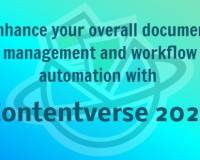It was a time of horse-drawn carriages and coal chutes to basement boilers. The Industrial Revolution had transformed the face of Western Civilization, and the world ran on steam. With the rapid expansion of industry came the necessity of new systems to run the businesses that came with the consumer product, as year by year the industrially produced commercial goods replacing the hand-crafted items of local tradesmen.
The Victorian era saw much of this change, including the invention of what can easily be recognized as the modern office. As new factories churned out mass-produced materials, new ways of managing the information related to that production were developed, and systems evolved to keep track of business.
At first, these were adaptations of previous methods of organizing papers; what had been desks with rows of “pigeon holes” (named for their similarity to the traditional dovecote), now were walls of boxes, drawers, and cabinets. It wasn’t until 1892 that the vertically-filed file drawer cabinet was invented, and the design won a gold medal at the 1893 Columbian Exhibition in Chicago. This soon made it the system of choice for filing paper documents.
It is remarkable how similar these cabinets from 1892 look (albeit in wood, rather than metal) to the still-standard filing system in use in offices all over the world, a hundred and twenty years later. Anybody familiar with the much-loved Disney movie, Mary Poppins, will recognize the scenes in Mr. Banks’ employer’s establishment, the Dawes Tomes Mousley Grubbs Fidelity Fiduciary Bank, as being in a financial institution not much unlike ones we still have today.
Are you still using Victorian technology in managing your documents?
Sure, if you’re a dedicated fan of “SteamPunk,” the literary and movie genre (familiar through such films as Wild, Wild, West, League of Extraordinary Gentlemen, and arguably the recent Sherlock Holmes movies) that strives to recreate modern or even futuristic technologies with the steam and clockwork tech of former eras, you might say an enthusiastic “Yes!” But most people living at the dawn of cloud computing are wondering why so little has changed over a dozen decades.
While the SteamPunk enthusiast might also be enamored with Thomas Jefferson’s mechanical copying rig over xerographic copiers or scanners, it’s likely the average office manager is happy to have whatever makes filing, accessing, and maintaining documents as efficient as possible.
Maybe it’s just the weight of that century plus of paper, literally and figuratively, that’s making it so hard to move beyond the piece-of-paper-in-the-file-drawer model, but, seriously, it doesn’t have to be that way today. If you looked at the figures from studies of how much time is dedicated to paper files, you’d be amazed. It’s one thing to imagine an Edwardian clerk in his green eye shade, scurrying through a warren of file cabinets to find or replace a particular piece of paper, but something more shocking to realize that in supposedly “modern” offices, as much as 90% of staff time is dedicated to document gathering and transfer. It’s expensive, it’s redundant, and it’s no longer how things have to be.
Offices that have moved to electronic document management solutions such as Contentverse have increased their productivity by up to 50% in just basic document handling. Once a document is added to the system (either sent from a computer program, or scanned in), it’s available in a couple of keystrokes, and easy to find with global search functionality. And it’s not only there for the folks at the home office, but at other locations, including via smartphones and tablets. Add to this the ability to share and track documents across work groups and departments, with secure access, and version control, and with very little effort you can find yourself in a Jetsons-like world of document handling.
So, if anti-gravity propulsion sounds better to you than steam-powered transport, take a look at what’s ready to pluck your document handling out of the dusty past, and bring it into a gleaming streamlined future. There’s a better way to manage your content.
About the Author:
















Leave a Comment